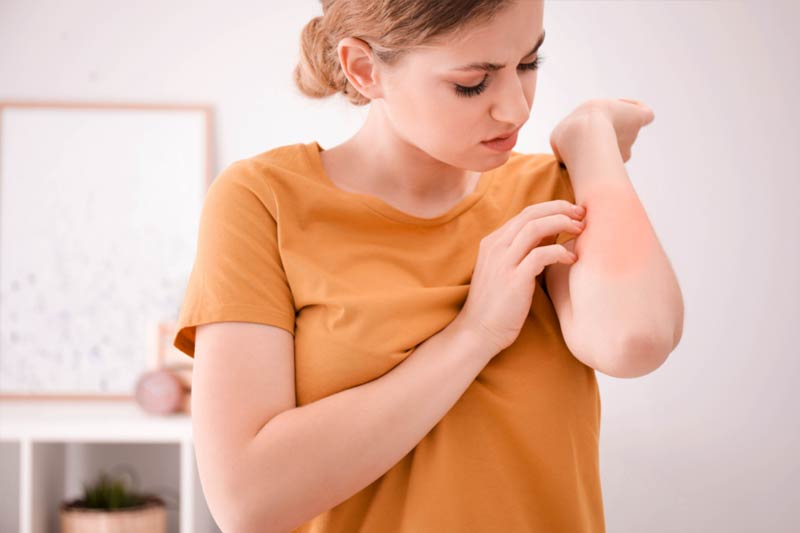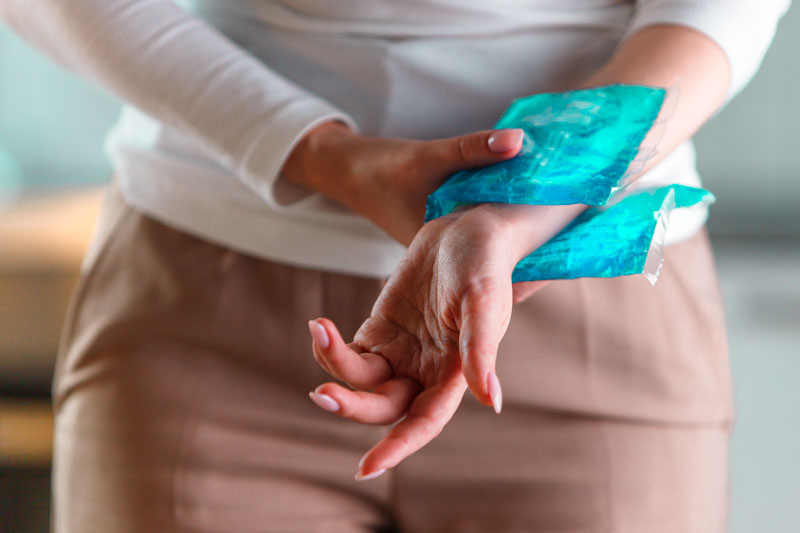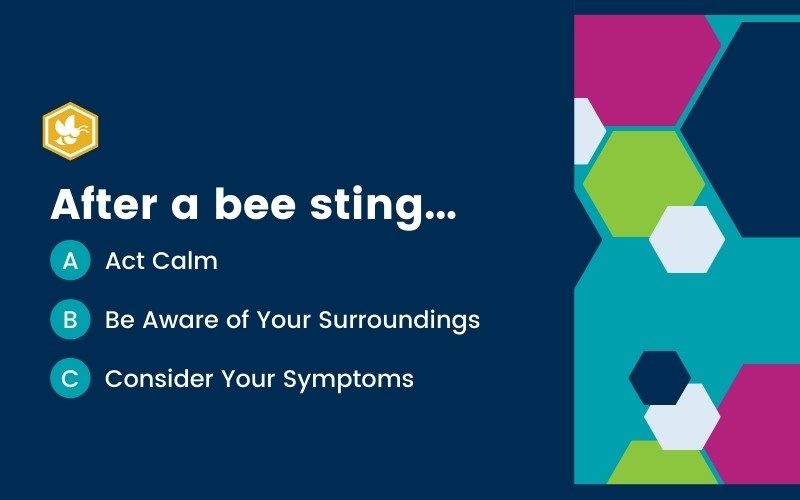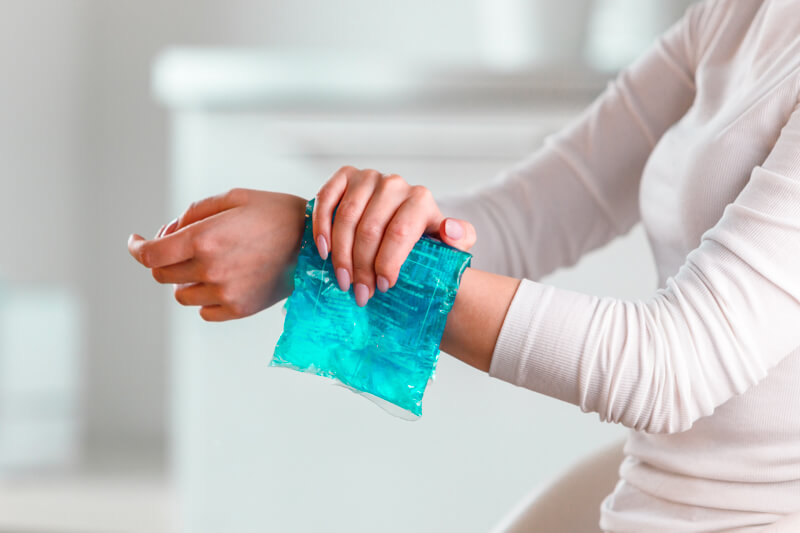Each bee and wasp sting is different. So, treating your sting well is dependent on what symptoms you experience and the severity. But don’t worry! We’ve covered all the bases. Below, you’ll find an easy 5-step plan for a basic sting. Then, keep reading for more thorough information.
How to Treat a Bee Sting in 5 Steps
Always call 911 if you think you are experiencing an allergic reaction.

Required Tools:
Optional Tools:
Steps to Treat a Bee Sting





GO IN-DEPTH: What to do after a sting
ACT Calm – Wasps, hornets, and yellow jackets can sting more than once. If they sense your fear, the situation may become more chaotic. Instead, take a deep breath.
BE Aware of Your Surroundings – Do you need to move somewhere safe? Carefully move indoors and away from danger.
CONSIDER Your Symptoms – Are you allergic to bee stings? If so, grab your epinephrine pen. Call 911 if necessary! Even if you’ve never had an allergic reaction before, pay attention to your symptoms and let someone know what has happened. Sometimes severe allergic reactions, also called anaphylaxis, can be delayed.

How to treat a bee sting based on your symptoms
After you have ensured your safety, it’s time to treat your bee sting. Reactions vary between people, but also between stings. The symptoms you experience this time may not be like the last time you were stung.
Treating Common Bee Sting Symptoms
The most common bee sting symptoms are:
- Burning
- Slight swelling
- A red welt
Apply an ice pack or cool compress for relief. These symptoms will likely resolve within a few hours.
Treating Moderate Bee Sting Symptoms
Moderate bee sting symptoms are:
- Reasonable swelling at the sting site
- Itchy and watery eyes
- Runny nose
- Rash
Treating Severe Bee Sting Symptoms
Here is a list of more serious bee sting symptoms:
- Trouble breathing
- Hives or swelling
- Tightness of the throat
- Hoarse voice
- Nausea
- Vomiting
- Abdominal pain
- Diarrhea
- Dizziness
- Fainting
- Low blood pressure
- Rapid heartbeat
- Cardiac arrest
If you experience any of these symptoms, you may be having a severe allergic reaction. Use a prescribed epinephrine pen if you have one. Immediately call 911. Then, make sure to follow up with an allergist about how to treat bee sting allergies.





